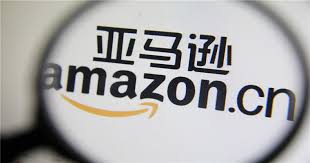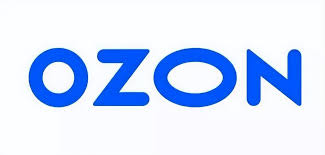In customer acquisition via Telegram (abbreviated as TG),Application of VKontakte Number Filtering Technology in Social Media enterprises often fall into the inefficient dilemma of "acquiring many leads but achieving few conversions". Manual screening of TG accounts is time-consuming and labor-intensive, with empty accounts, low-activity accounts, and non-target users accounting for over 60%—this leads to a waste of marketing resources and buries target users in the clutter. However, TG number screening is the key to breaking this dilemma: through TG number screening, enterprises can eliminate low-quality users from a massive pool of accounts and lock in target groups with actual needs. By relying on ITG Global Screening, a professional tool, enterprises can further master the latest TG number screening methods, shifting from a "wide-net casting" approach to "precision targeting" and significantly improving customer acquisition efficiency. This article will reveal the latest TG number screening methods and explain in detail how to use ITG Global Screening to precisely target audiences, bidding farewell to inefficient customer acquisition.
4 Major Inefficiencies in Traditional TG Customer Acquisition: Why Is Upgrading TG Number Screening Methods Urgent?1.Low Efficiency of Manual Screening, Time-Consuming and Labor-Intensive
Current Situation: Traditional TG number screening relies on manual verification of account validity one by one. A single person can only screen 500 accounts per day, and 100,000 accounts would take 200 days—seriously delaying the customer acquisition process.
Error Risk: Manual judgment on "whether an account is active or has needs" is prone to mistakes, with an error rate exceeding 25%. This results in effective target users being misjudged as low-quality users, leading to resource loss.
Core Pain Point: Low efficiency and high error rates make it impossible to meet the needs of large-scale TG customer acquisition.
2. Only Basic Validity Screening, Poor User Quality
Misconception: Traditional TG number screening only eliminates empty accounts and deactivated numbers, without screening key dimensions such as "needs, activity level, and region". As a result, non-target users still account for over 40% of the screened accounts.
Case Example: A cross-border e-commerce company screened 10,000 TG accounts using traditional methods, only removing empty accounts before sending promotions. Later, it was found that 60% of the accounts belonged to "non-target region users" (the company focused on the European and American markets but had Southeast Asian users mixed in), with only 32 conversions and a conversion rate of 0.32%.
Data Comparison: For TG customer acquisition with only basic screening, target users account for less than 30%; while with the latest screening methods, target users account for over 85%.
3. No Integration of User Behavior, Low Demand Matching
Problem: Traditional TG number screening does not analyze user interaction behaviors (such as joined groups, posted updates, and consultation content), making it impossible to judge user needs. Promoting products to "users with no needs" results in an interaction rate of less than 5%.
Consequence: An online education institution promoted courses to TG accounts that "did not follow education groups and had no learning interactions". The consultation rate was only 2%, the conversion cycle exceeded 30 days, and customer acquisition efficiency was extremely low.
Key Data: TG users with matched needs have an interaction rate of 25%—5 times that of users with no needs—and the conversion cycle is shortened by 60%.
(Editor: Contact)
.png) Solving the Inefficiency of Telegram User Screening: Avoid 6 Major Pitfalls, ITG Tool Helps You Achieve Twice the Result with Half the Effort
Solving the Inefficiency of Telegram User Screening: Avoid 6 Major Pitfalls, ITG Tool Helps You Achieve Twice the Result with Half the Effort
.jpg) No One Responds to Your Pushes? WhatsApp Account Screening Targets Highly Active Customers to Boost Interaction Efficiency!
No One Responds to Your Pushes? WhatsApp Account Screening Targets Highly Active Customers to Boost Interaction Efficiency!
 Avoid These Pitfalls! A Review of Common Mistakes in Telegram Number Screening – How to Double Your User Acquisition Efficiency?
Avoid These Pitfalls! A Review of Common Mistakes in Telegram Number Screening – How to Double Your User Acquisition Efficiency?
.jpg) Comprehensive Analysis of the Full Telegram Number Screening Process: From Data Collection to Precision Screening, A Step-by-Step Guide to Efficiently Acquiring Target Users
Comprehensive Analysis of the Full Telegram Number Screening Process: From Data Collection to Precision Screening, A Step-by-Step Guide to Efficiently Acquiring Target Users
 Is Your Customer Data Disorganized? ITG Global Management Tool Integrates Information Efficiently to Unlock Data Value!
Is Your Customer Data Disorganized? ITG Global Management Tool Integrates Information Efficiently to Unlock Data Value!
 111...[Details]
111...[Details]
.png) Korean phone numbers start with +82, followed by 8-10 digits (e.g., mobiles: 010-XXXX-XXXX). Virtual...[Details]
Korean phone numbers start with +82, followed by 8-10 digits (e.g., mobiles: 010-XXXX-XXXX). Virtual...[Details]
.png) Korean phone numbers start with +82, followed by 8-10 digits (e.g., mobiles: 010-XXXX-XXXX). Virtual...[Details]
Korean phone numbers start with +82, followed by 8-10 digits (e.g., mobiles: 010-XXXX-XXXX). Virtual...[Details]
.jpg) The 408 area code covers parts of Northern California, primarily Santa Clara County (including San J...[Details]
The 408 area code covers parts of Northern California, primarily Santa Clara County (including San J...[Details]
 333...[Details]
333...[Details]
Still Manually Screening WA Accounts?! Automated Tools Let You Free Your Hands Completely!
 Line account purging tools, such as UltFone LINE Transfer or iMyFone Umate Pro, help users permanent...[Details]
Line account purging tools, such as UltFone LINE Transfer or iMyFone Umate Pro, help users permanent...[Details]
.png) In Signal, adding people is straightforward via contacts, usernames, or invites. Open the app, tap t...[Details]
In Signal, adding people is straightforward via contacts, usernames, or invites. Open the app, tap t...[Details]
 000...[Details]
000...[Details]
 TG (Telegram) account purging tools like the "Delete Account for Telegram" app or Telegram's built-i...[Details]
TG (Telegram) account purging tools like the "Delete Account for Telegram" app or Telegram's built-i...[Details]